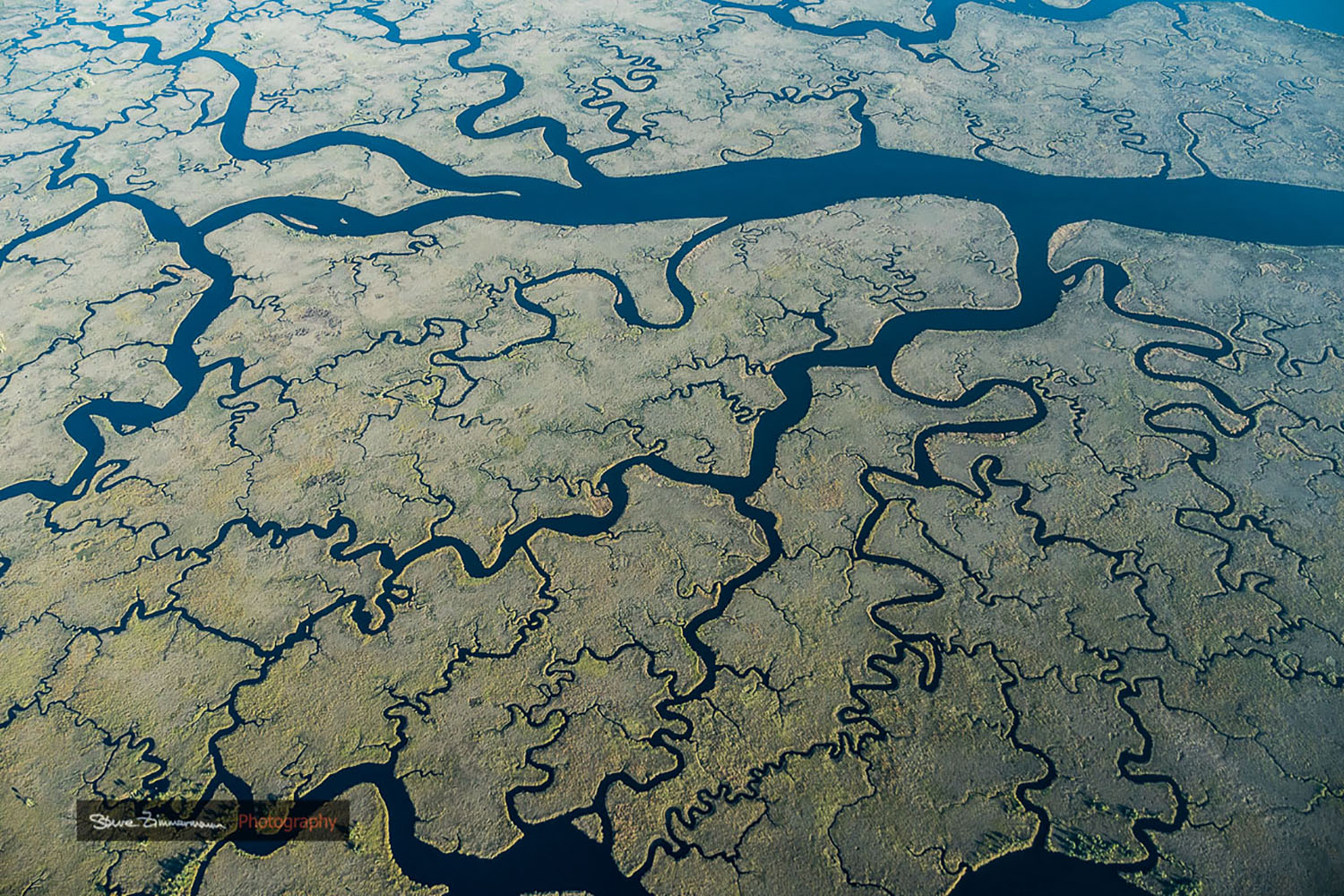Florida Wetlands. Photo by Steve Zimmermann
But perhaps the biggest thing we share is our love for the earth below and the sky we fly within. Yes, it’s true that hundreds of millions of people fly in airliners, and while that experience seems to them as though it would be comparable to the sense we get as pilot of small planes, very small planes compared to Airbus and Boeing behemoths, we know that what we do is fundamentally different and, we dare say, essentially better.
One of the things we do know is that our view of the world below is remarkable in ways we used to marvel over to ourselves as we flew but that today we capture with those great cameras we all have in our pockets and share with dozens or hundreds of our friends.
Then there are those photographers who go a step beyond—let’s be honest, who go to a whole different level of vision, using their sophisticated equipment and gifted eyes to see and capture images that gape your jaw, photos of the earth that make us rethink our planet, what it is, and who we are in relation to it.
Legendary air-to-ground photographer Steve Zimmermann is one of those photographers. For decades, he’s been capturing images of the earth that we can only marvel at. To Zimmermann, the goal sounds simple but is anything but. “My goal as a photographer,” he says, “is to allow the viewer to see the world with fresh eyes. As a pilot, it amazes me how even a few hundred feet of altitude changes everything. An aerial perspective transforms even familiar terrain into a miraculous new world of unexpected delights.” Many of those, you will witness here.
How does he do it? Again, in his words, “With no clear objective, I’ve flown dozens of ’prospecting’ photo missions that never get more than 50 miles from my home airport, and I rarely land without having seen something entirely new. Of course, it helps that I live in northern Colorado: a 50-mile radius stretches from the stabilized dunes of the eastern part of the state to the high peaks of the Rocky Mountains, with everything from prairie to farmland to dense urban development to snow-covered ridges high above tree line.”
And Zimmermann takes advantage of the thing that our small airplanes do so well, flying low and slow. “I capture many of my most treasured images,” he adds, “from low altitudes, roughly 1000’AGL, with a medium telephoto or zoom lens mounted on a full-frame digital camera; currently, it’s the marvelous Nikon D850 or the new mirrorless Nikon Z 7, whose smaller form factor and lower weight are welcome in a cramped cockpit. The resulting images are often semi-abstract studies of pattern and texture, taken from nearly straight overhead.”
Those of us lucky to own an airplane choose our ride based on a variety of factors, but Zimmermann’s are very specific and unlike any pilot except a few others who do what he does. “My two-seat Pipistrel Virus SWiS was ordered from the factory with sliding photo windows in both doors; its high, cantilevered wing gives me a nearly unrestricted view out and down.” It’s hard to imagine a better platform for it.
Safety-wise, what Zimmermann does involves an elevated level of risk, which he understands well and address in a few smart ways. “On warm days, I will sometimes leave the pilot side door in the hangar for an even better view. With the doors on, I cruise en route at 130+ KTAS on less than 4gph. When I spot a potential subject, I’ll throttle back to 2.0 gph, drop the full-span flaperons to the first notch, and re-trim; the Pipistrel just putters along, holding altitude at 65 to 70 knots. I fly with my left hand and shoot with my right or, if the air is rough, I’ll engage the 2-axis autopilot, set up a turn over my subject using the heading bug, and stabilize the camera with both hands. Every few seconds, I’ll stop shooting, scan the instruments, and take a careful look around for traffic (ADS-B traffic on the MFD moving map helps, too).”
The results of all of this are here. And all of this beauty, Zimmermann says, can be summed in a few lines of verse from Christina Rossetti, an English poet who died nine years before the Wright Brothers flew but seemed to get it when she wrote:
Tread softly! all the earth is holy ground.
It may be, could we look with seeing eyes,
This spot we stand on is a Paradise
Enjoy these spectacular views of a world whose wonders continue to get us flying and that keep us amazed.








